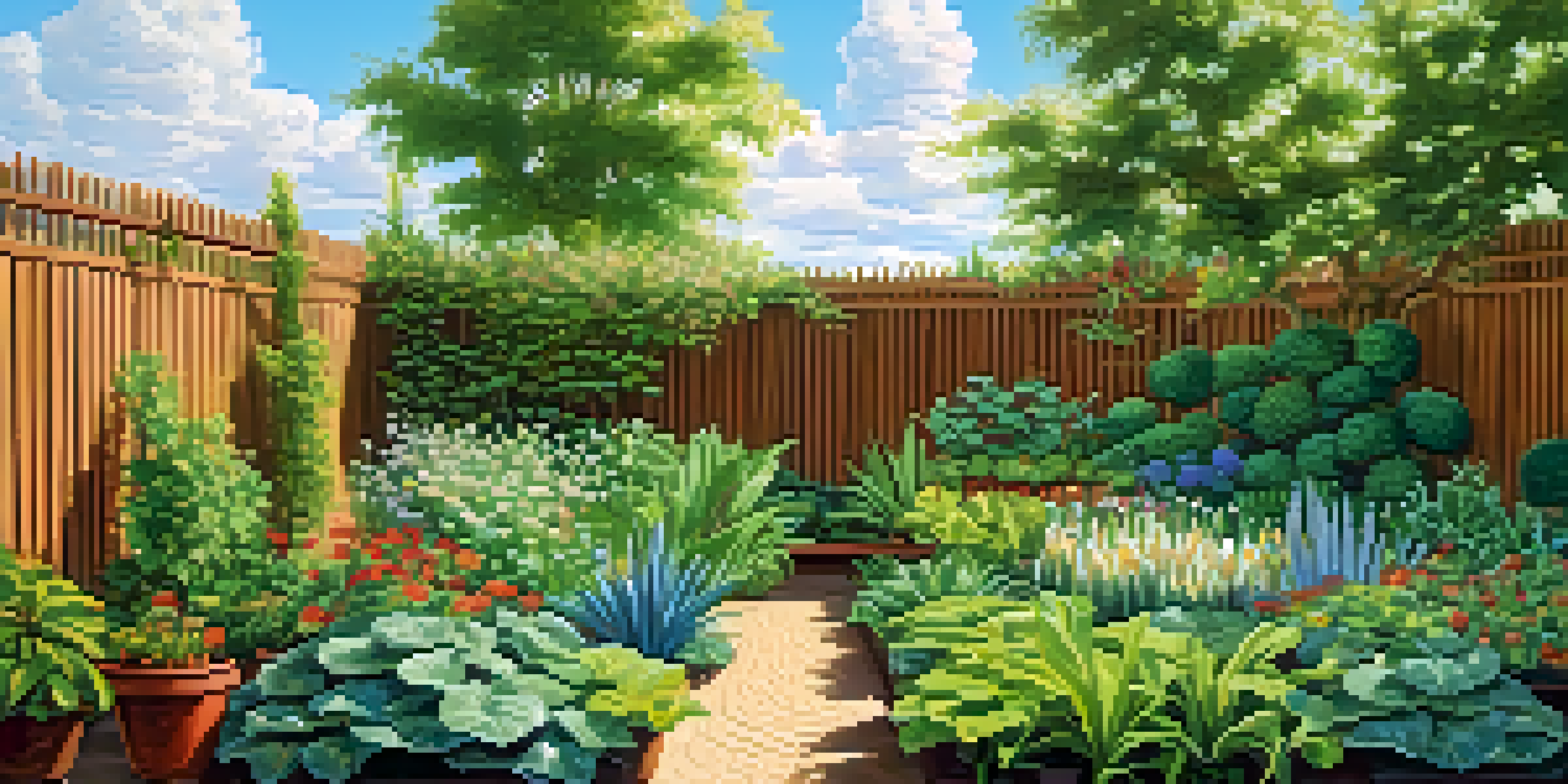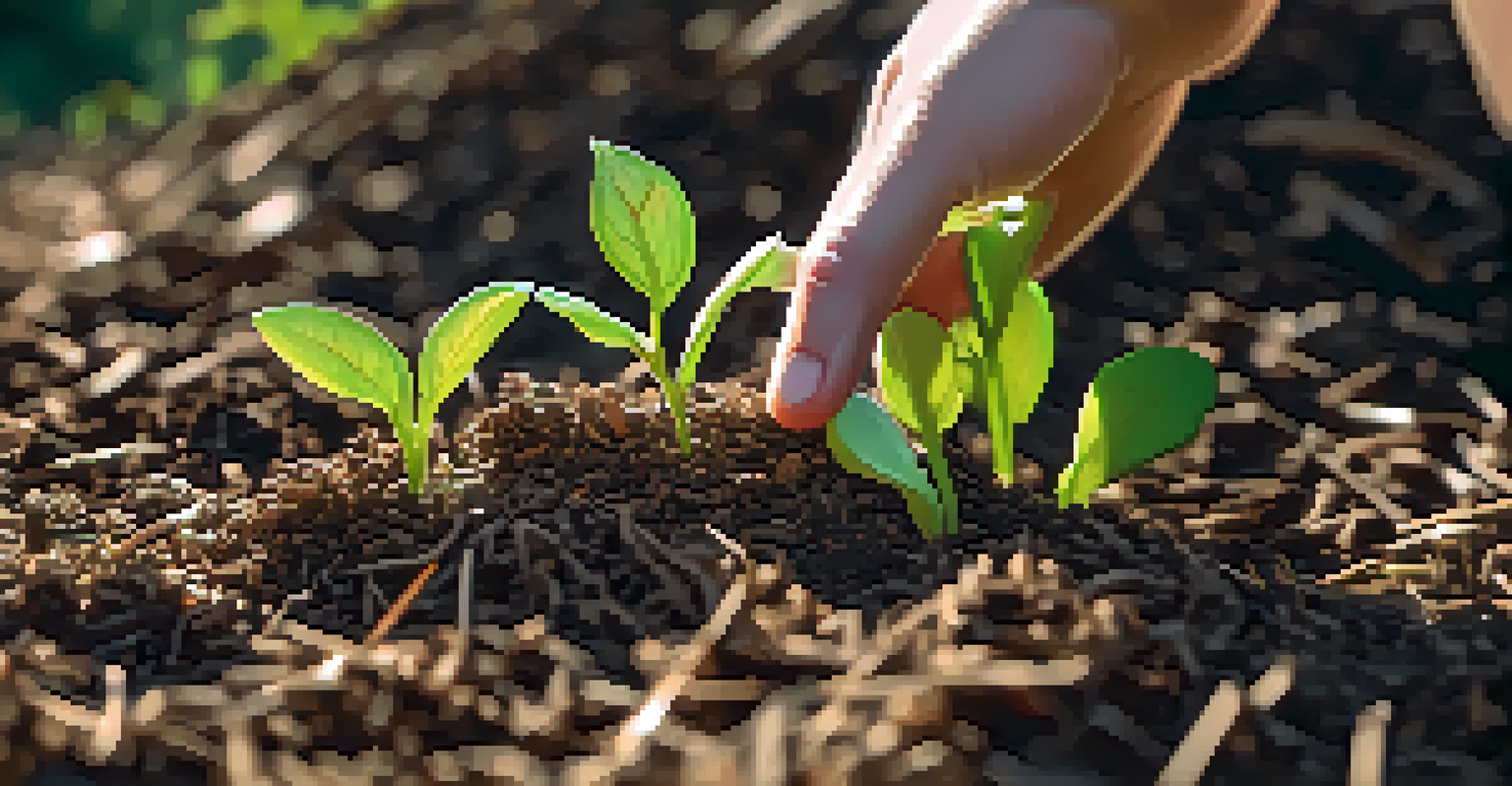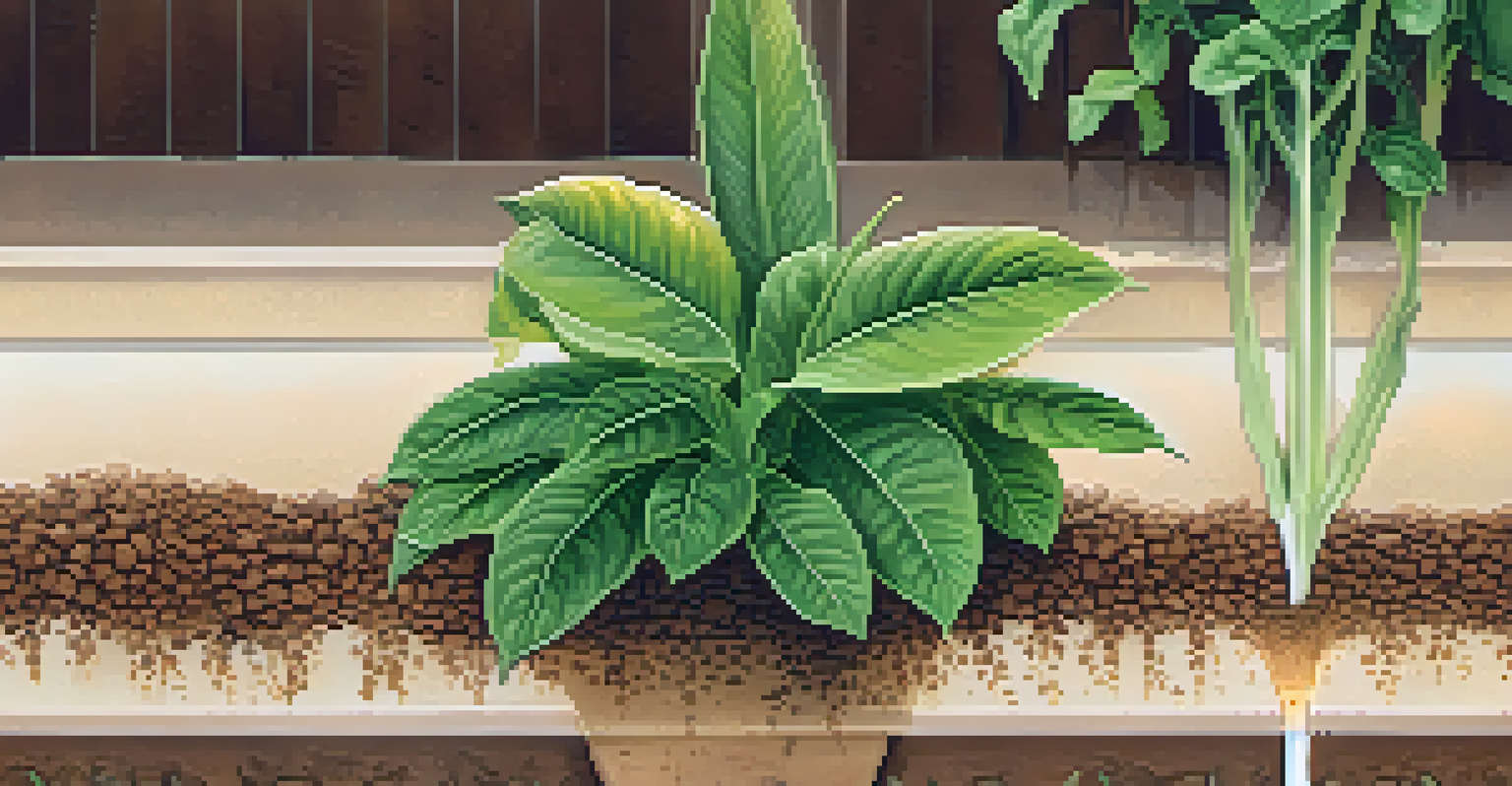Watering Techniques for Thriving Organic Garden Plants

Understanding the Water Needs of Your Plants
Every plant has unique water requirements based on its species, growth stage, and the environment. For instance, leafy greens may need more consistent moisture, while cacti thrive on less. Understanding these needs helps you tailor your watering routine effectively.
Water is the driving force of all nature.
A good rule of thumb is to observe your plants regularly. If the leaves start to droop or turn yellow, it might be a sign of overwatering or underwatering. Keeping an eye on your plants will guide you in adjusting your watering schedule.
Additionally, factors such as soil type and weather conditions can significantly impact how much water your plants need. Sandy soils drain quickly, while clay soils retain moisture longer, so factor this into your watering strategy.
Choosing the Right Time to Water
Timing your watering can make all the difference in plant health. Morning is often considered the best time, as it allows plants to absorb moisture before the heat of the day. This helps prevent evaporation and encourages strong root growth.

Watering in the evening is another option, but it can lead to prolonged moisture on the leaves, increasing the risk of disease. If you find it challenging to water during the day, aim for late afternoon when temperatures begin to cool down.
Know Your Plants' Water Needs
Understanding the unique water requirements of your plants based on species and environmental factors is essential for effective watering.
Ultimately, the best time to water your garden is when your plants show signs of needing it. Observing their conditions will help you determine the most suitable times for watering.
Watering Techniques: Soaker Hoses and Drip Irrigation
Soaker hoses and drip irrigation systems are excellent tools for delivering water directly to the roots of your plants. These methods reduce evaporation and ensure that water penetrates the soil effectively, promoting healthy growth.
The best time to plant a tree was twenty years ago. The second best time is now.
By laying soaker hoses along rows of plants, you can achieve even watering without soaking the foliage, which minimizes the risk of fungal diseases. Drip irrigation takes this a step further by allowing you to set a timer for consistent watering.
Both methods are especially beneficial for larger gardens or during dry spells, as they conserve water and reduce the labor involved in manual watering.
How to Water Deeply and Infrequently
Deep watering encourages plants to develop strong root systems that can access moisture deeper in the soil. Instead of shallow, frequent watering, aim to saturate the soil to a depth of about 6-12 inches once or twice a week.
This approach not only conserves water but also fosters resilience in plants, allowing them to withstand periods of drought. Use a soil probe or your finger to check moisture levels and determine when it's time to water again.
Timing Matters for Watering
Watering in the morning is optimal, as it allows plants to absorb moisture before the heat sets in, reducing evaporation.
Remember, it's better to water deeply and less frequently than to provide a little bit every day. This method helps ensure that your plants are getting the hydration they need to thrive.
The Role of Mulching in Water Conservation
Mulching is a fantastic way to retain soil moisture and reduce the frequency of watering. Organic materials like straw, wood chips, or grass clippings act as a barrier, preventing evaporation and keeping the soil cool.
A layer of mulch can also suppress weeds, which compete with your plants for water and nutrients. When you protect your soil with mulch, you're not only conserving moisture but also enhancing the overall health of your garden.
Applying mulch around your plants can lead to healthier, more resilient growth, allowing your garden to thrive in varying conditions.
Adapting to Seasonal Changes in Watering Needs
As the seasons change, so do the water needs of your plants. During hot summer months, your garden may require more frequent watering, whereas cooler fall or spring weather may allow for longer intervals between watering.
It's essential to stay attuned to these seasonal variations. Regularly check the soil moisture, as even a brief dry spell can stress your plants, especially young seedlings.
Deep Watering Promotes Strong Roots
Deep, infrequent watering encourages robust root systems, helping plants access moisture deeper in the soil and withstand drought.
By adjusting your watering routine with the seasons, you ensure that your plants receive the right amount of water when they need it most.
Signs of Overwatering and Underwatering
Understanding the signs of overwatering and underwatering is crucial for maintaining a healthy garden. Overwatered plants may exhibit yellowing leaves, wilting, or root rot due to waterlogged soil. Conversely, underwatered plants might show signs of drooping, dry leaves, or stunted growth.
Regularly assessing your plants will help you catch these issues early. If you suspect overwatering, check the soil's moisture level and adjust your watering schedule accordingly.

Being proactive in identifying these signs will help you keep your garden thriving and prevent stress on your plants.